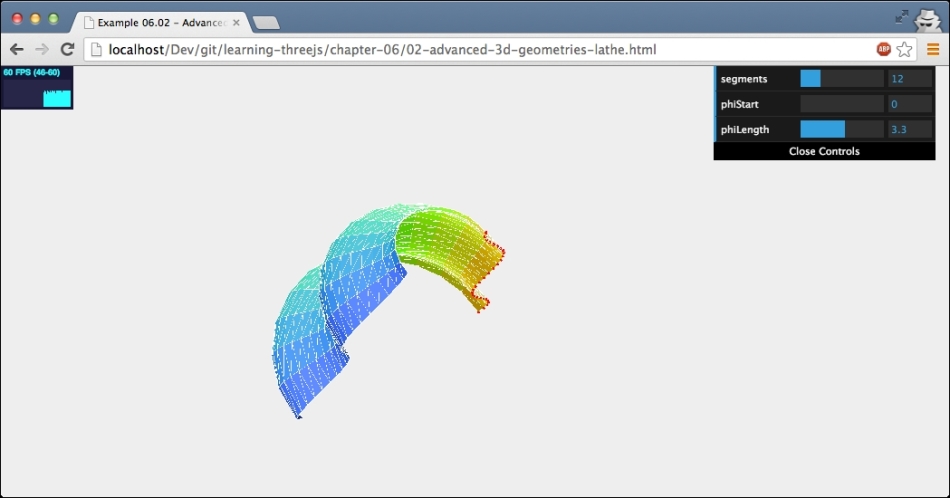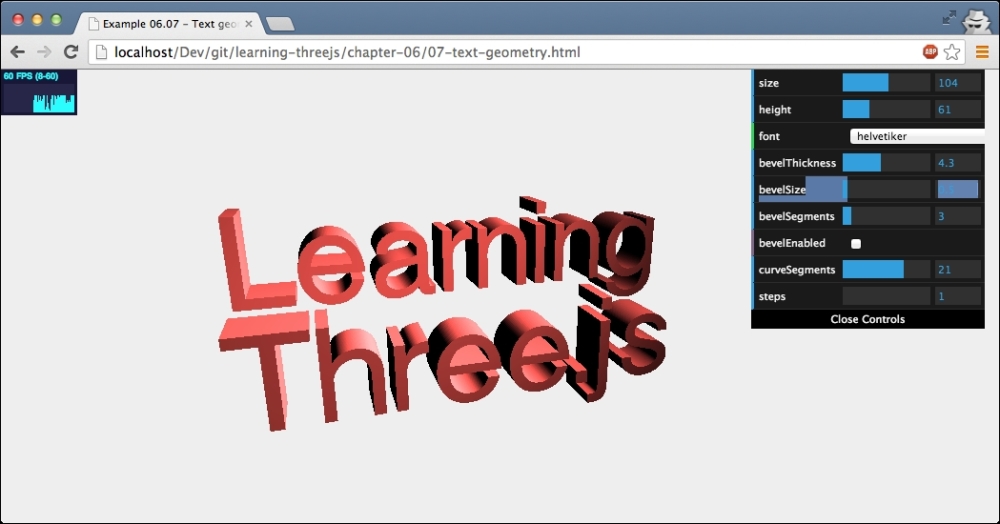In the previous chapter, we showed you all the basic geometries provided by Three.js. Besides these basic geometries, Three.js also offers a set of more advanced and specialized objects. In this chapter, we'll show you these advanced geometries and cover the following subjects:
How to use advanced geometries such as
THREE.ConvexGeometry,THREE.LatheGeometry, andTHREE.TubeGeometry.How to create 3D shapes from 2D shapes using
THREE.ExtrudeGeometry. We'll do this based on a 2D shape drawn using functionality provided by Three.js, and we'll show an example where we create a 3D shape based on an externally loaded SVG image.If you want to create custom shapes yourself, you can easily amend the ones we've discussed in the previous chapters. Three.js, however, also offers a
THREE.ParamtericGeometryobject. With this object, you can create a geometry based on a set of equations.Finally, we'll look at how you can create 3D text effects using
THREE...




